Search
To search for an exact match, type the word or phrase you want in quotation marks.
A*DESK has been offering since 2002 contents about criticism and contemporary art. A*DESK has become consolidated thanks to all those who have believed in the project, all those who have followed us, debating, participating and collaborating. Many people have collaborated with A*DESK, and continue to do so. Their efforts, knowledge and belief in the project are what make it grow internationally. At A*DESK we have also generated work for over one hundred professionals in culture, from small collaborations with reviews and classes, to more prolonged and intense collaborations.
At A*DESK we believe in the need for free and universal access to culture and knowledge. We want to carry on being independent, remaining open to more ideas and opinions. If you believe in A*DESK, we need your backing to be able to continue. You can now participate in the project by supporting it. You can choose how much you want to contribute to the project.
You can decide how much you want to bring to the project.
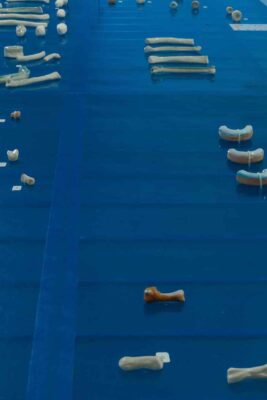
After the Mediterranean is an exhibition curated by Oriol Fontdevila that explores possible imaginaries. Overcoming the classical references to the Mediterranean as a sea of tranquility, commercial exchange and melting pot of cultures, the artists invited by Fontdevila belong to the generation born between the late 80s and early 90s and whose approaches are based on decolonial premises and a reality of climatic emergency.
Starting, then, from an imaginary very different from the one that awaits us in the coming months when Instagram accounts will be filled with idyllic snapshots captured from all kinds of boats and ships, the seven artists in the exhibition, coming from different countries of the Mediterranean area (Spain, France, Albania, Lebanon, Morocco…) investigate from very specific situations the great ecological and social challenges we are confronted with. The exhibition takes place in Hauser & Wirth Menorca, an institution that has carefully recovered the spaces adjacent to the old hospital of Illa del Rei, based on criteria of sustainability and protection of biodiversity. In its desire to integrate the project in the Menorcan context, Hauser & Wirth has offered the artists the opportunity to prepare their work in situ through a residency program and also to collaborate with local artists and artisans.
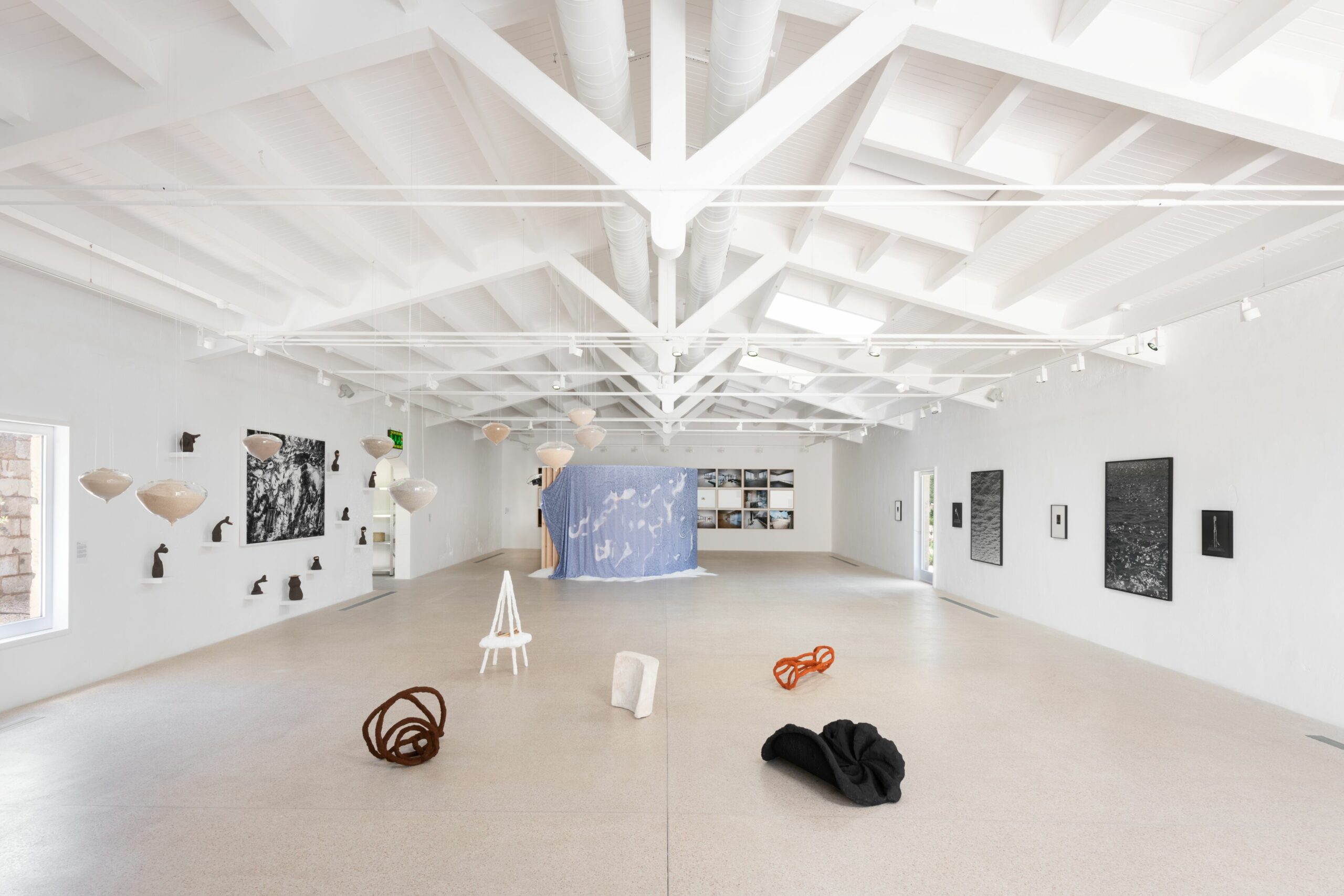
General view of the installation ‘After the Mediterranean’, curated by Oriol Fontdevila, Hauser & Wirth Menorca, 2023. Courtesy of the artists and Hauser & Wirth. Photo: Roberto Ruiz
The exhibition opens with two clocks and a compass, two ways of measuring time and orienting oneself in space. Abi Shehu’s (Lezha, Albania, 1993) “clock” is the real-time image of a mountain in Lura, northern Albania, whose inhabitants measure the passage of time from the shadows cast as the position of the sun changes daily. The clock by Adjoa Armah (Accra, Ghana, 1988) is diversified into 12 sand clocks collected from different beaches in Menorca, activated during an inaugural performance that will let the sand fall until the end of the exhibition. The compass we mentioned corresponds to different sculptures inspired by objects found on the beaches and covered with materials such as paprika, charcoal, chalk and coffee, which have characterized the exchange and migratory routes.
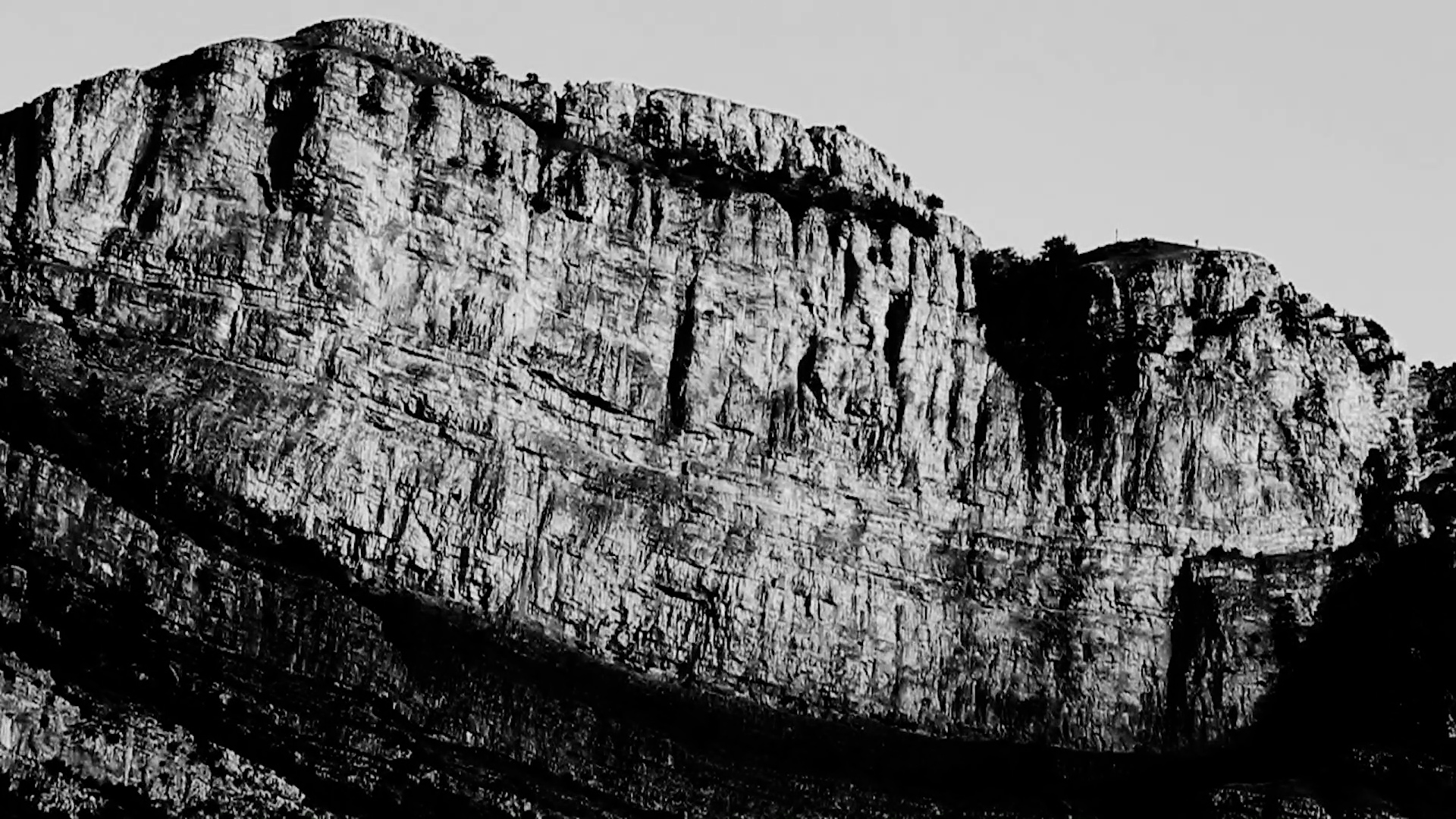
ABI SHEHU_The Red Rock_2020. Extract from ‘The Red Rock’ (2020) d’Abi Shehu © Abi Shehu. Courtesy Hauser & Wirth
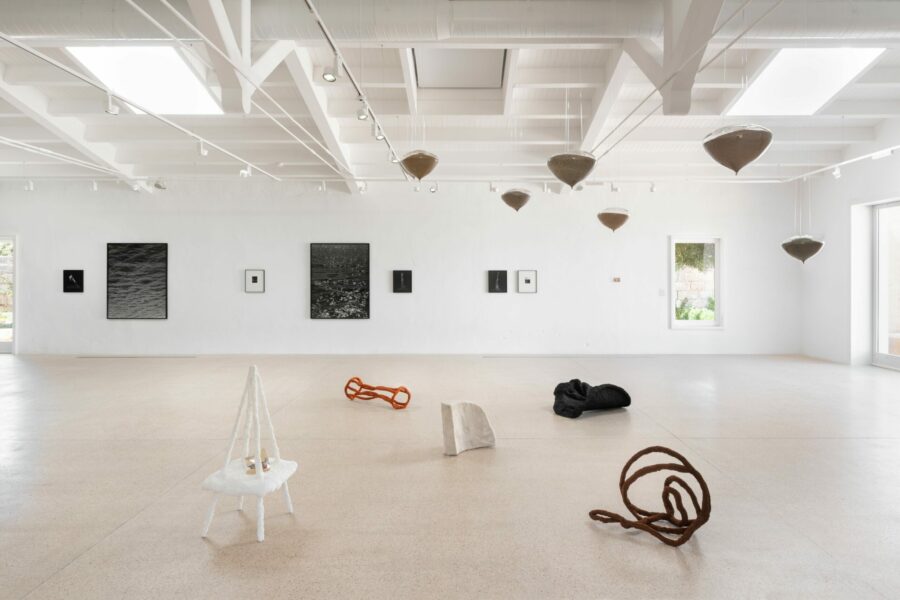
Installation view, ‘(if) space moves, matter moves’ (2023) and ‘(when) time turns, space turns’ (2023) by Adjoa Armah and ‘Shipwreck Studies’ (2017–2022) by Erola Arcalís in ‘After the Mediterranean’, curated by Oriol Fontdevila, Hauser & Wirth Menorca, 2023. Courtesy of the artists and Hauser & Wirth. Photo: Roberto Ruiz
The Mediterranean of intercepted migrations is what Abi Shehu talks about, focusing on the caves of the Vojsa River that crosses Albania and Greece, a migratory route in which detentions are made visible in the loss of teeth. Ceramic jars with teeth in their upper opening, created in collaboration with ceramist Blanca Madruga and local dentists, evoke these facts.
Sara Ouhaddou (Draguignan, France, 1986) questions the museography of the Museum of History in Marseille by creating a whole inventory of Marseille soap sculptures hiding ceramics, in order to recover and enhance the legacy of the city’s Arab past.
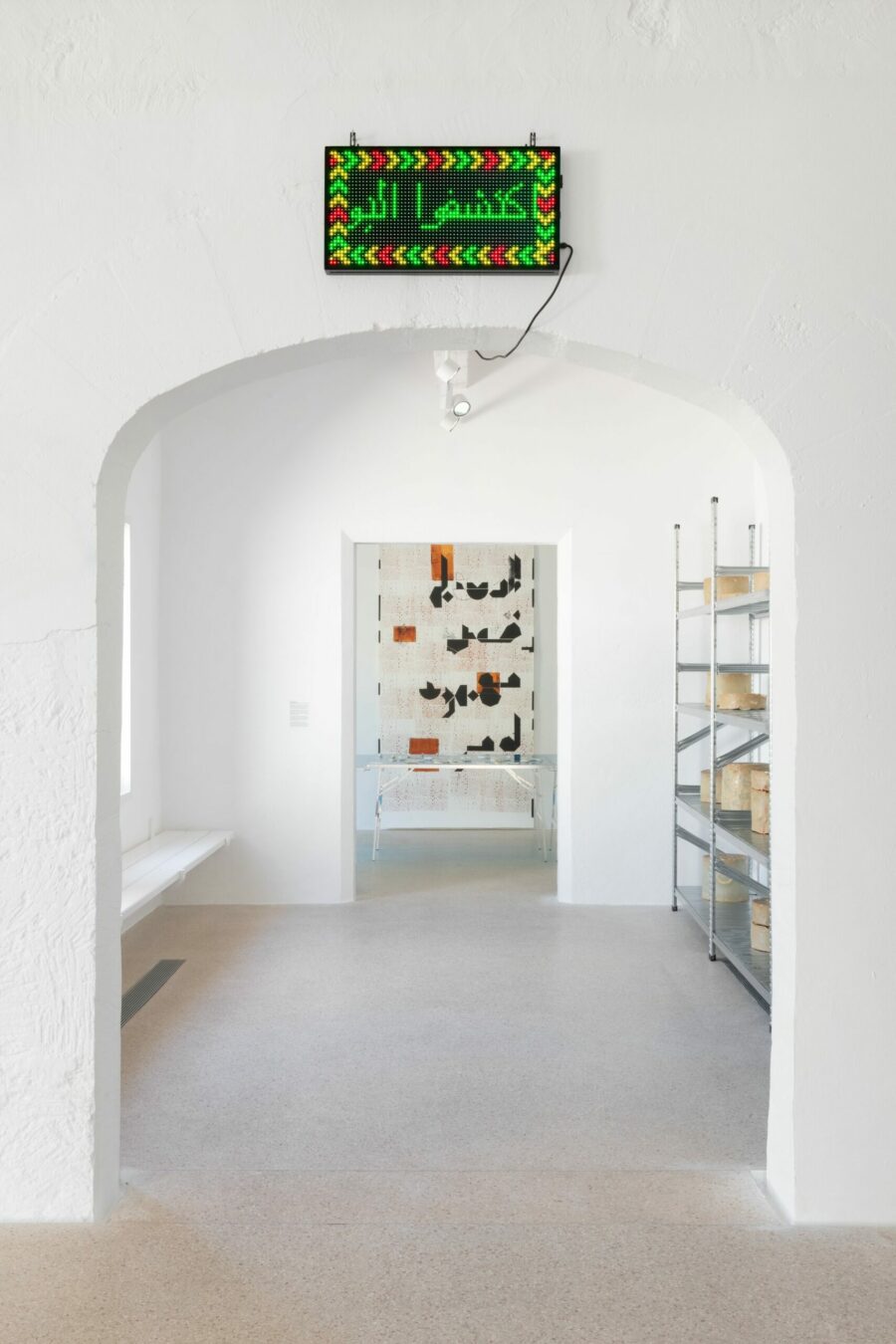
View of the installation, ‘I Give You Back What’s Mine / You Give Me Back What’s Yours’ (2020) by Sara Ouhaddou in ‘After the Mediterranean’, curated by Oriol Fontdevila, Hauser & Wirth Menorca, 2023. Courtesy of the artists and Hauser & Wirth. Photo: Roberto Ruiz
The Huniti Goldox collective (Areej Huniti -Jordan, 1989- and Eliza Goldox -RDA, 1985-) works from geological research and focuses on an element, salt, which made it possible for very fragile organisms to survive in the Mediterranean. Salt is also what will remain when, as a result of climate change, the sea is transformed into a salt desert. Between dystopia, science and poetics, Huniti Goldox’s video installation takes us into an atmosphere in which the disappearance of the sea gives way to the resurgence of the victims of the genocide of the European borders.
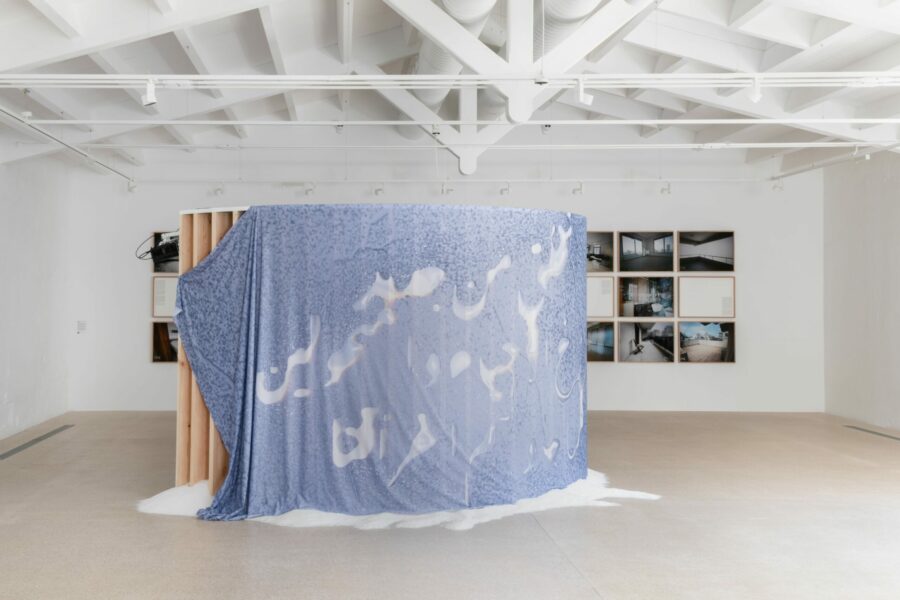
View of the installation, ‘Rising Up From Halite’ (2023) by Huniti Goldox. In the bkcgorund “Views for Rent” by Omar Mismar. in ‘After the Mediterranean’curated by Oriol Fontdevila, Hauser & Wirth Menorca, 2023. Courtesy of the artists and Hauser & Wirth. Photo: Roberto Ruiz
On the transcendence of historical facts from the everyday, Omar Mismar (Bekaa Valley, Lebanon, 1986) starts from a personal situation: the need to look for an apartment with balcony (need that come from the confinement) in Beirut. Analyzing the offers on real estate portals, he realizes that the exteriors – visible through windows or balconies – are blurred in the images, a fact in which the artist sees not only the need for real estate companies to protect the location of the apartments to avoid unfair concurrence, but, more importantly, the consequences of the still recent explosion in the port of Beirut that places it politically in a state of uncertainty.
The Mediterranean from a historical and personal perspective and also with a space for fiction articulates the work of Erola Arcalís (Mahón, 1986). From the story of her great-grandfather, a boat builder, she combines the views of the gray, opaque and calm Mediterranean and of his last boat that was left on dry land to host a naturist community. The artist brings us closer to a utopia that no longer has place and, at the same time, perhaps, still has no place.
In the outdoor garden of Hauser & Wirth, Laia Estruch (Barcelona, 1981) creates a structure of sails tensioned and fastened to the trees, a sort of scenic sculptures, which dialogue with the landscape and the wind, and allow a physical interaction that was activated through a phonetic intervention during the inauguration by the artist herself.
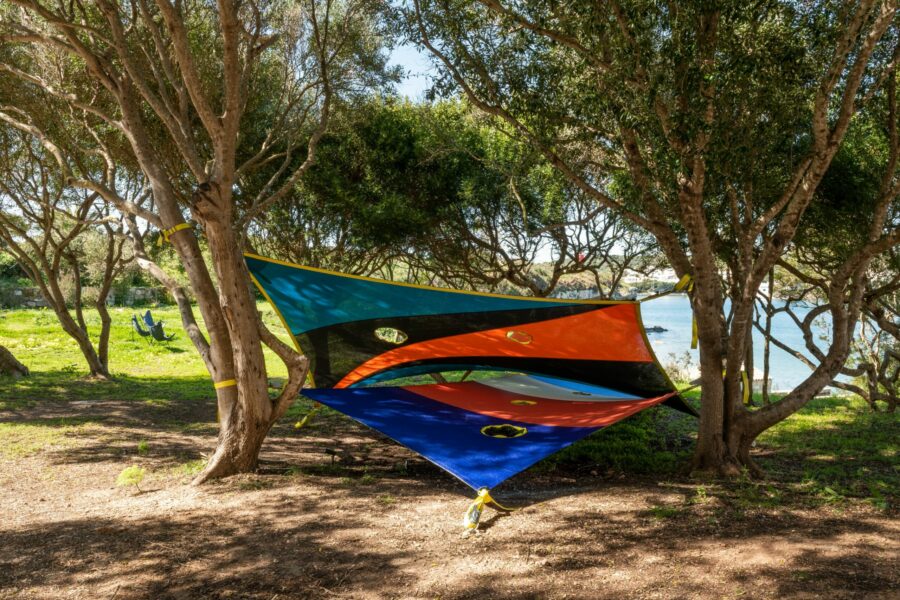
View of the installation, ‘Kite 2’ (2023) de Laia Estruch in ‘After the Mediterranean’, curated by Oriol Fontdevila, Hauser & Wirth Menorca, 2023. Courtesy of the artists and Hauser & Wirth. Photo: Roberto Ruiz
After the Mediterranean evokes, from a plural and culturally diverse point of view, fragments of spaces of possibilities, not exempt of frictions, that question the classic imaginaries linked to that sea and point to the current ecological and social urgencies. Absolutely relevant topics that make up the specific public program that is being worked on with the island’s educational institutions.
[Featured Image: Detail og ‘I Give You Back What’s Mine You Give Me Back What’s Yours’ (2020) by Sara Ouhaddou © Sara Ouhaddou
Courtesy Galerie Polaris and Hauser & Wirth. Photo: Carlos Torrico]
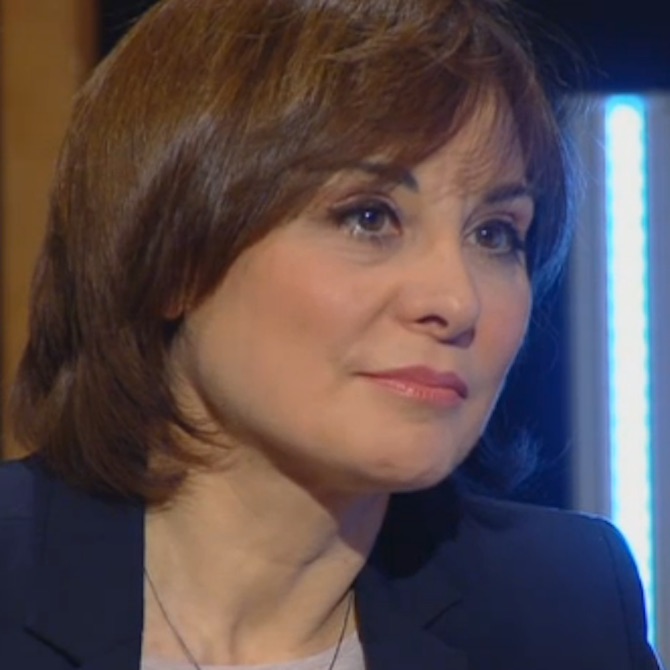
Montse Badia has never liked standing still, so she has always thought about travelling, entering into relation with other contexts, distancing herself, to be able to think more clearly about the world. The critique of art and curating have been a way of putting into practice her conviction about the need for critical thought, for idiosyncrasies and individual stances. How, if not, can we question the standardisation to which we are being subjected?
www.montsebadia.net
"A desk is a dangerous place from which to watch the world" (John Le Carré)